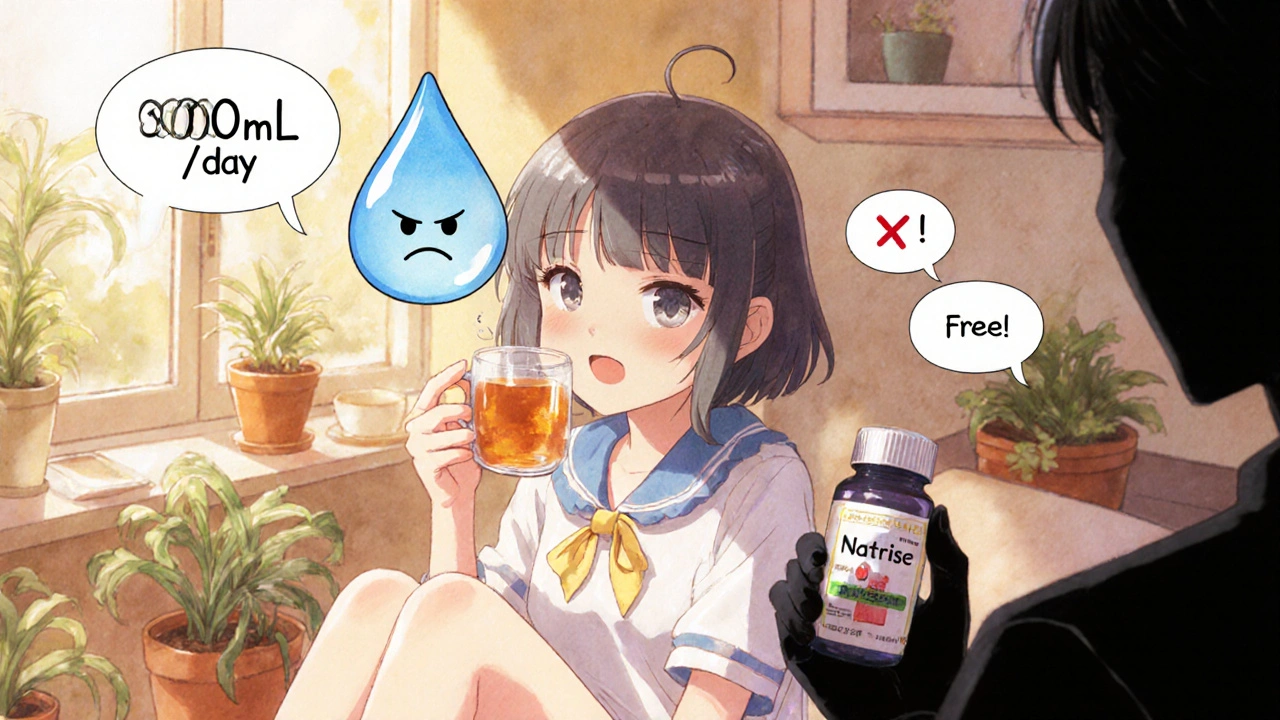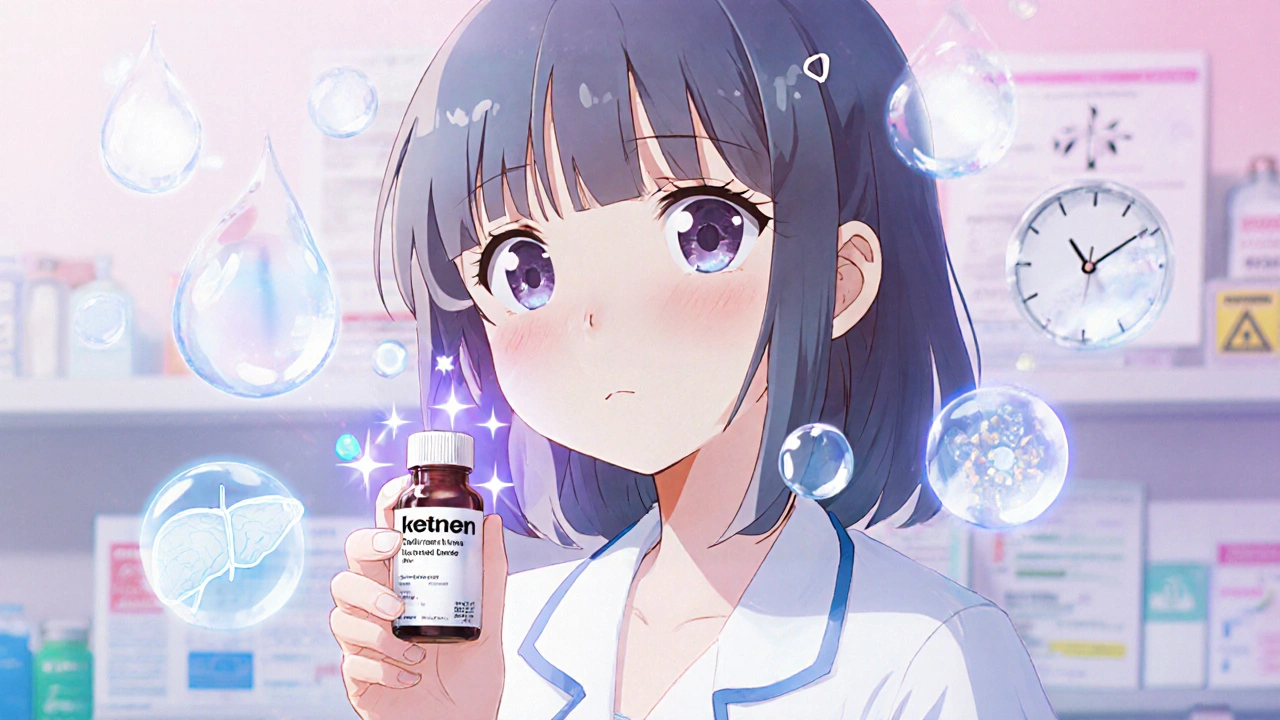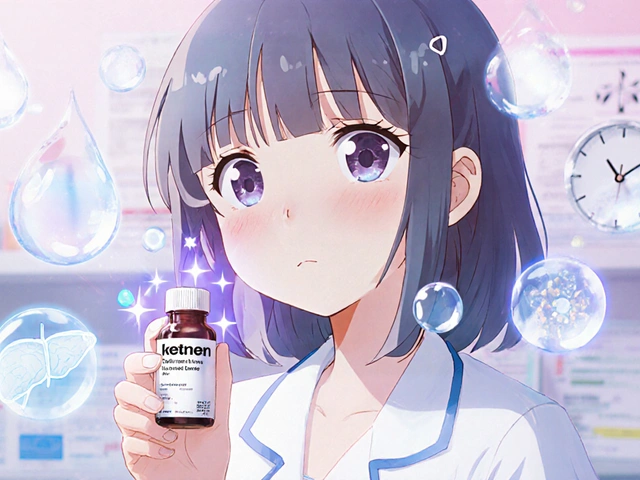When your blood sodium drops too low - a condition called hyponatremia - your body’s fluid balance is thrown off. Symptoms like confusion, nausea, fatigue, and even seizures can follow. For many, Natrise (tolvaptan) is prescribed to help raise sodium levels by making the kidneys excrete more water without losing salt. But it’s not the only option. If you’ve been told to take Natrise, you might be wondering: Are there better, safer, or cheaper alternatives? The answer isn’t simple. It depends on why your sodium is low, how fast it dropped, and what else is going on in your body.
What Natrise (Tolvaptan) Actually Does
Natrise is a vasopressin receptor antagonist. That’s a fancy way of saying it blocks the hormone that tells your kidneys to hold onto water. In conditions like SIADH (syndrome of inappropriate antidiuretic hormone secretion), your body makes too much of this hormone. The result? Your blood gets diluted, sodium drops, and you feel awful.
Tolvaptan works by letting your body flush out excess water - not sodium. This raises your sodium concentration naturally. It’s not a quick fix. You usually start with a 15 mg dose and adjust based on how your sodium levels respond over 24-48 hours. In clinical trials, patients saw sodium levels rise by about 4-6 mmol/L in the first day, with most reaching safe levels within 4 days.
But Natrise isn’t for everyone. It carries a black box warning from the FDA: it can cause serious liver damage. That’s why doctors monitor liver enzymes before and during treatment. It’s also expensive - over $1,200 for a 30-day supply in the U.S., even with insurance. And it’s only approved for short-term use (up to 30 days) in most cases because of the liver risk.
When Natrise Is the Best Choice
Natrise shines in specific situations. If you have chronic SIADH - maybe from lung cancer, brain injury, or certain medications - and your sodium stays stubbornly low despite fluid restriction, Natrise can be life-changing. It’s also used for heart failure patients with low sodium who aren’t responding to diuretics alone.
For someone who’s been hospitalized multiple times because their sodium keeps dropping, Natrise might be the only thing that keeps them out of the ER. In these cases, the liver risk is weighed against the risk of brain swelling from untreated hyponatremia. The trade-off often makes sense.
Alternative 1: Fluid Restriction
Before any drug, doctors often try the simplest fix: drink less water. For mild, slow-onset hyponatremia - especially in older adults or those with SIADH - limiting fluids to 800-1,200 mL per day can be enough to correct sodium levels.
It sounds easy, but it’s hard to stick to. People get thirsty. They drink tea, soup, fruit, even ice cubes. Studies show that only about 40% of patients can maintain strict fluid restriction long-term. But for those who can, it’s free, has no side effects, and doesn’t require lab monitoring.
It’s not for acute cases. If your sodium dropped fast - say, after surgery or a seizure - fluid restriction alone won’t cut it. But for chronic, stable low sodium? It’s the first-line recommendation in guidelines from the European Society of Endocrinology and the American College of Physicians.
Alternative 2: Urea (Urea Monohydrate)
Urea might sound like a waste product, but it’s been used for hyponatremia since the 1950s. It works by pulling water out of the blood through osmosis - kind of like Natrise, but without touching vasopressin receptors.
Studies show urea raises sodium levels just as effectively as tolvaptan, with fewer liver risks. In a 2021 trial published in Clinical Journal of the American Society of Nephrology, urea was as effective as tolvaptan in correcting sodium over 72 hours, with no cases of liver injury. And it costs less than $10 a month.
But it’s not perfect. Urea tastes awful - like bitter chalk. Many patients can’t tolerate it without flavoring or mixing it with juice. It also causes increased urination and can lead to dehydration if you don’t drink enough. In Canada, it’s not FDA-approved, but it’s available as a compounded prescription from specialty pharmacies.

Alternative 3: Demeclocycline
This antibiotic, originally used for acne and respiratory infections, has a side effect: it makes the kidneys less responsive to vasopressin. That’s why it’s used off-label for SIADH.
It’s slower than Natrise. It can take 3-7 days to see results. But it’s oral, cheap (under $50/month), and doesn’t carry the same liver warning. It’s often used when patients need long-term treatment and can’t take Natrise.
The downsides? It can cause sun sensitivity, dizziness, and kidney issues in older adults. It’s also not recommended if you have liver disease or are pregnant. But for stable, chronic SIADH in otherwise healthy people? It’s a solid, low-cost option.
Alternative 4: Hypertonic Saline (for Acute Cases)
If your sodium is dangerously low - below 120 mmol/L - and you’re confused, seizing, or unconscious, you don’t need a pill. You need an IV.
Hypertonic saline (3% sodium chloride) is given in hospitals to rapidly raise sodium levels. It’s life-saving in emergencies. But it’s risky. Too much, too fast, and you can cause central pontine myelinolysis - a rare but devastating brain injury.
Doctors carefully control the rate: no more than 6-8 mmol/L increase in the first 24 hours. It’s not a long-term fix. Once sodium stabilizes, they switch to oral meds or fluid restriction. But in the ER, it’s the gold standard.
Alternative 5: Salt Tablets + Fluid Management
Some patients with mild hyponatremia, especially those who sweat a lot (athletes, construction workers), have low sodium because they’re drinking too much water after exercise. In these cases, adding salt to your diet can help.
Oral sodium chloride tablets (500-1,000 mg per tablet) can be taken with meals. Combined with limiting water intake after exertion, this often fixes the problem without drugs. A 2020 study in Journal of Athletic Training showed that 85% of athletes with exercise-associated hyponatremia normalized their sodium levels within 48 hours using this method.
It’s not for SIADH or heart failure patients. But for healthy people with low sodium from overhydration? It’s simple, safe, and effective.

Which Alternative Works Best for You?
There’s no one-size-fits-all. Here’s how to think about it:
- Fast, severe hyponatremia? Hypertonic saline in hospital - then transition.
- Chronic SIADH with no liver issues? Natrise for short-term control; consider urea or demeclocycline for long-term.
- Cost is a big concern? Urea or demeclocycline - both are far cheaper than Natrise.
- Just drinking too much water? Fluid restriction + salt tablets.
- Can’t tolerate pills? Fluid restriction is drug-free.
Many patients start with Natrise because it works quickly. But if you’re on it long-term, talk to your doctor about switching to urea or demeclocycline. The liver risk doesn’t go away just because you’ve been on it for a month.
What Doctors Miss About Natrise
Too often, doctors prescribe Natrise because it’s the newest option - not because it’s the best for your situation. A 2023 analysis of U.S. prescriptions found that 42% of Natrise prescriptions were for patients who didn’t meet the FDA’s approved criteria - like those with mild hyponatremia or no clear diagnosis of SIADH.
That’s dangerous. You don’t need a powerful drug if you can fix the problem with water restriction. And you shouldn’t take Natrise for more than 30 days unless you’re under strict monitoring.
Ask your doctor: Why am I on this? What’s the goal? Are there safer options? If they can’t answer, get a second opinion.
Final Thoughts
Natrise is a powerful tool - but it’s not the only one. For many, it’s overused. For others, it’s essential. The right choice depends on your diagnosis, your health history, your budget, and your tolerance for side effects.
If you’re taking Natrise, don’t assume it’s the only option. Ask about urea, demeclocycline, or even simple fluid restriction. You might find a safer, cheaper, or more sustainable way to keep your sodium in range - without risking your liver.
Is Natrise safe for long-term use?
No. Natrise carries a black box warning for potentially fatal liver damage. It’s only approved for short-term use - up to 30 days - in most cases. Long-term use requires strict monthly liver function tests. For chronic hyponatremia, alternatives like urea or demeclocycline are safer options.
Can I take urea instead of Natrise?
Yes, for many people with chronic SIADH. Urea works similarly to Natrise by drawing water out of the blood, but without affecting the liver. It’s cheaper, has no black box warning, and is effective in clinical studies. The main downside is its unpleasant taste, but mixing it with juice or using flavored versions can help.
Does demeclocycline really work for hyponatremia?
Yes. Demeclocycline blocks the kidney’s response to vasopressin, helping raise sodium levels. It’s slower than Natrise - taking days to work - but it’s been used for over 50 years with proven results. It’s often chosen for long-term management in patients who can’t tolerate or afford tolvaptan.
Why is fluid restriction recommended before drugs?
For mild, chronic hyponatremia - especially from SIADH or overhydration - cutting back on fluids is the first step because it’s safe, free, and avoids drug side effects. Many patients correct their sodium levels without any medication. Drugs like Natrise are reserved for when fluid restriction fails or isn’t possible.
Is hypertonic saline dangerous?
It can be, if used incorrectly. Rapid correction of sodium levels with hypertonic saline can cause central pontine myelinolysis, a serious brain injury. That’s why it’s only used in hospitals, under close monitoring, and with strict limits on how fast sodium rises. It’s not for home use or chronic treatment.
Can I switch from Natrise to a cheaper alternative?
Yes, if your condition is stable. Many patients on long-term Natrise can switch to urea or demeclocycline under doctor supervision. The transition is usually gradual, with sodium levels monitored closely. Talk to your doctor about cost, side effects, and whether your diagnosis supports the switch.
If you’ve been on Natrise for more than a month and haven’t discussed alternatives, it’s time to ask. Your sodium level matters - but so does your liver, your wallet, and your long-term health.







